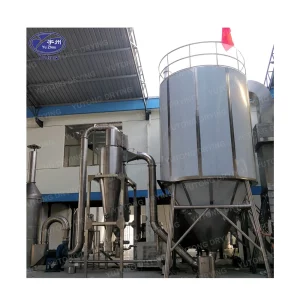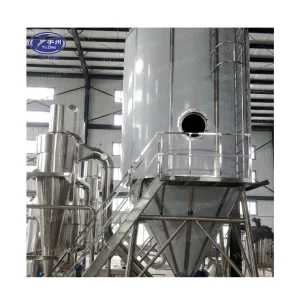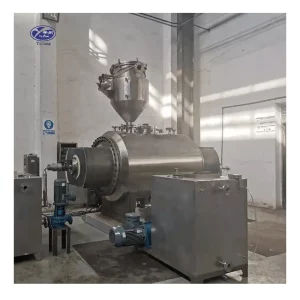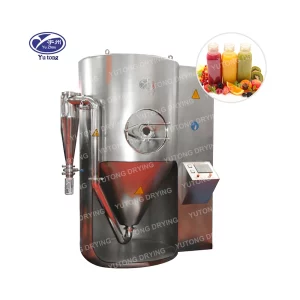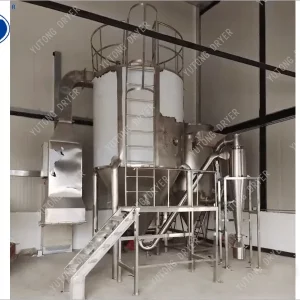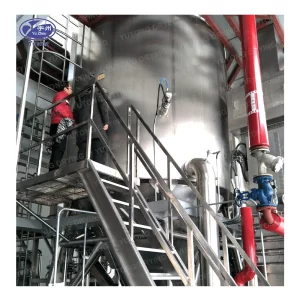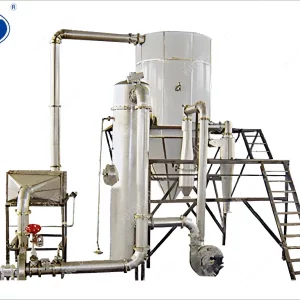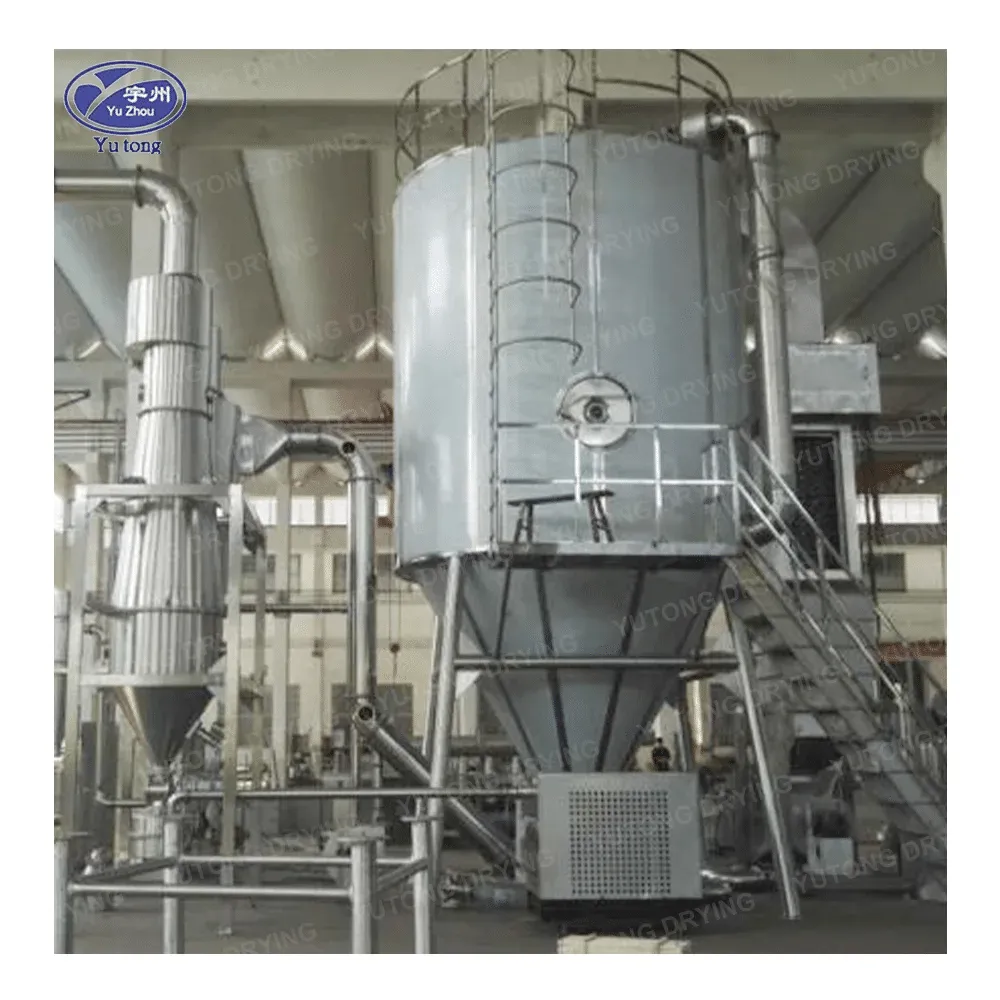A bin dryer, often referred to in the context of agriculture and food processing industries, is a piece of equipment designed to reduce the moisture content in harvested crops or processed foods stored in large bins or silos. The primary purpose of using a bin dryer is to ensure that the stored products maintain their quality, prevent spoilage, and extend their shelf life by keeping them at optimal moisture levels.
Understanding Bin Dryers
1. Principle of Operation
The operation of a bin dryer typically involves circulating heated air through the stored product to evaporate excess moisture. This process can be continuous or intermittent, depending on the design and application. The heated air can be generated by various heat sources, including electric heaters, gas burners, or steam, which are chosen based on factors such as cost, availability, and environmental impact.
2. Types of Bin Dryers
There are several types of bin dryers available, each designed for specific applications and capacities:
Gravity Flow Dryers: These are simple in design and rely on gravity to move the material through the dryer. The material is placed on top of the bin, and hot air is blown up from the bottom, passing through the material as it falls down.
Batch Dryers: These dryers are used when the material needs to be dried in batches rather than continuously. They can be more energy-efficient for certain types of materials and operations.
Continuous Dryers: As the name suggests, these dryers operate continuously, making them suitable for high-volume operations where the material is fed into one end and removed from the other after drying.
Recirculating Dryers: In this type, the air that has passed through the material is recirculated back through the heater before being reintroduced into the drying chamber. This can help in maintaining consistent temperature and humidity conditions.
3. Advantages of Using Bin Dryers
Quality Preservation: By controlling moisture levels, bin dryers help preserve the quality of the stored product, preventing issues like mold growth, insect infestation, and deterioration.
Cost-Effective: For bulk storage operations, using a bin dryer can be more cost-effective than other drying methods due to its ability to handle large volumes efficiently.
Versatility: Bin dryers can be used for a variety of products, including grains, seeds, coffee beans, and even some types of plastics, making them a versatile choice for many industries.
Customizability: Depending on the specific requirements of the operation, bin dryers can be customized in terms of size, capacity, and the type of heating source used.
4. Environmental Considerations
When choosing and operating a bin dryer, it’s important to consider the environmental impact. Electric heaters, for instance, may have lower direct emissions but could contribute indirectly if the electricity comes from non-renewable sources. Gas burners offer a more direct method of heating but must be managed to minimize emissions. Implementing energy-efficient designs and using renewable energy sources can significantly reduce the environmental footprint of bin dryer operations.
In conclusion, bin dryers play a crucial role in the post-harvest management and food processing industries by ensuring that products are stored under optimal conditions, thus preserving their quality and value. Their efficiency, versatility, and the ability to handle large volumes make them an indispensable tool in modern agricultural and industrial practices. However, careful consideration of operational specifics and environmental impacts is necessary to maximize their benefits while minimizing negative effects.
What are the disadvantages of recirculating batch dryers?
Recirculating batch dryers are widely used in various industries for drying materials. While they offer several advantages, they also have some disadvantages that need to be considered. In this article, we will explore the disadvantages of recirculating batch dryers.
Recirculating batch dryers are designed to dry materials in batches by circulating heated air through the drying chamber. They are commonly used in industries such as pharmaceuticals, food processing, and chemical manufacturing. However, like any drying system, they have their limitations.
High Energy Consumption
1. Heating Requirements
Recirculating batch dryers require a significant amount of energy to heat the air and maintain the desired drying temperature. The energy consumption is mainly due to the need to heat the air from ambient temperature to the drying temperature, which can be quite high depending on the material being dried.
In addition, the drying process often requires a long time, which further increases the energy consumption. This can be a significant drawback, especially in industries where energy costs are a major concern.
2. Heat Loss
Another factor contributing to high energy consumption is heat loss. Recirculating batch dryers are not completely insulated, and there is always some heat loss through the walls and openings of the drying chamber. This heat loss reduces the efficiency of the drying process and increases the energy consumption.
To minimize heat loss, additional insulation can be added, but this can increase the cost and complexity of the dryer.
Long Drying Times
1. Batch Processing
Recirculating batch dryers operate in a batch mode, which means that a batch of material is loaded into the drying chamber, dried, and then unloaded before the next batch can be processed. This batch processing nature results in longer drying times compared to continuous drying systems.
The time required to dry a batch of material depends on several factors, including the initial moisture content of the material, the drying temperature, and the airflow rate. In some cases, the drying process can take several hours or even days, which can significantly impact production schedules.
2. Inefficient Airflow
The airflow in recirculating batch dryers is often not as efficient as in continuous drying systems. The air may not evenly distribute throughout the drying chamber, leading to uneven drying and longer drying times.
In addition, the recirculation of air can cause some moisture to be reabsorbed by the material, further prolonging the drying process. This can be a particular problem for materials that are sensitive to moisture or have a low tolerance for residual moisture.
Limited Capacity
1. Batch Size
Recirculating batch dryers are designed to handle a specific batch size. The capacity of the dryer is limited by the size of the drying chamber and the loading and unloading mechanisms. This can be a disadvantage for industries that require large-scale drying operations or have high production volumes.
If the batch size is too small, the dryer may not be utilized efficiently, resulting in higher energy consumption per unit of dried material. On the other hand, if the batch size is too large, it may lead to uneven drying or overloading of the dryer, which can damage the equipment and reduce its lifespan.
2. Inflexibility
The limited capacity of recirculating batch dryers also makes them less flexible compared to continuous drying systems. Changing the batch size or drying parameters can be more difficult and time-consuming, as it may require adjustments to the equipment and process settings.
This inflexibility can be a drawback for industries that need to adapt to changing production requirements or handle a variety of materials with different drying characteristics.
Maintenance and Cleaning Requirements
1. Complexity
Recirculating batch dryers are relatively complex pieces of equipment, with multiple components such as heaters, fans, filters, and ductwork. This complexity increases the maintenance requirements and the likelihood of breakdowns or malfunctions.
Regular maintenance is necessary to ensure the proper functioning of the dryer and to prevent problems such as clogged filters, damaged heaters, or faulty fans. This can be time-consuming and costly, especially for large-scale drying operations.
2. Cleaning Difficulties
Cleaning recirculating batch dryers can also be a challenge. The drying chamber and ductwork can accumulate dust, debris, and residual material, which can affect the drying efficiency and quality of the next batch.
Cleaning the dryer thoroughly requires disassembling some parts of the equipment, which can be labor-intensive and may require specialized tools and expertise. In addition, cleaning chemicals may be needed to remove stubborn residues, which can pose environmental and safety concerns.
Cost Considerations
1. Initial Investment
Recirculating batch dryers can be expensive to purchase and install. The cost depends on several factors, including the size, capacity, and features of the dryer. In addition to the purchase price, there may be additional costs for installation, commissioning, and training.
For small businesses or industries with limited budgets, the initial investment in a recirculating batch dryer may be a significant financial burden.
2. Operating Costs
As mentioned earlier, recirculating batch dryers have high energy consumption and maintenance costs. These operating costs can add up over time and affect the profitability of the drying operation.
In addition, the long drying times and limited capacity can lead to lower production efficiency, which can also impact the overall cost-effectiveness of the dryer.
Recirculating batch dryers have several disadvantages that need to be carefully considered before choosing them for a drying application. The high energy consumption, long drying times, limited capacity, maintenance and cleaning requirements, and cost considerations can all pose challenges for industries using these dryers. However, in some cases, the advantages of recirculating batch dryers, such as their ability to handle a variety of materials and provide controlled drying conditions, may outweigh these disadvantages. It is important to evaluate the specific needs and requirements of the drying process and compare different drying options to determine the most suitable solution.

